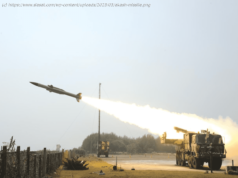The center of Michael will move across the eastern Gulf of Mexico through Tuesday night, the U. S. National Hurricane Center said.
TALLAHASSEE, Fla., Oct 9 (Reuters) – Hurricane Michael grew into a major Category 3 storm as it howled closer to Florida’s Gulf shore on Tuesday, sending tens of thousands of coastal residents fleeing to higher ground one day before its expected arrival with towering waves and roof-shredding winds.
Michael is projected to plow into Florida’s panhandle at midday on Wednesday, unleashing potentially devastating waves of seawater as high as 12 feet (3.6 meters) that could rush inland for miles around the storm’s center, the National Hurricane Center (NHC) warned.
By Tuesday, Michael was already causing major disruptions to U. S. oil and gas production as it churned north over the Gulf of Mexico.
President Donald Trump declared a state of emergency for the entire state of Florida, freeing up federal assistance to supplement state and local disaster response.
At latest report, the NHC said the storm was packing sustained winds of up to 120 miles per hour (195 km per hour), jumping from a Category 2 to Category 3 hurricane on the five-step Saffir-Simpson wind scale.
Winds of that magnitude can inflict substantial damage to roofs and walls of even well-constructed homes, according to the National Weather Service.
The storm also is likely dump prodigious amounts of rain over Florida, Alabama, Georgia and the Carolinas – still recovering from severe flooding last month in the aftermath of Hurricane Florence. Up to a foot of rainfall (30 cm) is forecast for some areas.
“This is a storm that is going to be life-threatening in several ways,” said Bo Patterson, the mayor of Port St. Joe, Florida, whose small beachfront town lies directly in the storm’s projected path.
(Photo: NOAA GOES-East/Handout via Reuters)
Florida Governor Rick Scott said Michael was expected to be “the most deadly, destructive storm to the panhandle in decades.”
Tens of thousands of residents and tourists were ordered evacuated from low-lying areas in at least 20 Florida counties stretching along 200 miles (322 km) of shore in the Panhandle and adjacent Big Bend regions. A hurricane warning was posted along more than 300 miles (483 km) of the coast from the Florida-Alabama border south to the Suwannee River.
“If you don’t follow warnings from officials this storm could kill you,” said Scott, a Republican running for the U. S. Senate in November’s congressional elections.
Some of the storm’s most significant early impact was to offshore energy production. U. S. producers in the Gulf cut oil production by about 40 percent and natural gas output by 28 percent on Tuesday, the Bureau of Safety and Environmental Enforcement said, citing reports from 27 companies.
The Gulf accounts for 17 percent of daily U. S. crude oil output and 5 percent of daily gas production, according to government figures. The partial shutdown ahead of Michael helped drive oil prices slightly higher on Tuesday.
Scott declared a state of emergency in 35 counties, mostly encompassing rural areas known for small tourist cities, beaches, wildlife reserves and the state capital, Tallahassee.
(Reporting by Devika Krishna Kumar Additional reporting by Susan Heavey and Roberta Rampton in Washington, Gina Cherelus and Barbara Goldberg in New York, Brendan O’Brien in Milwaukee, Liz Hampton in Houston, Andrew Hay in New Mexico; editing by Bill Berkrot and Frances Kerry)






